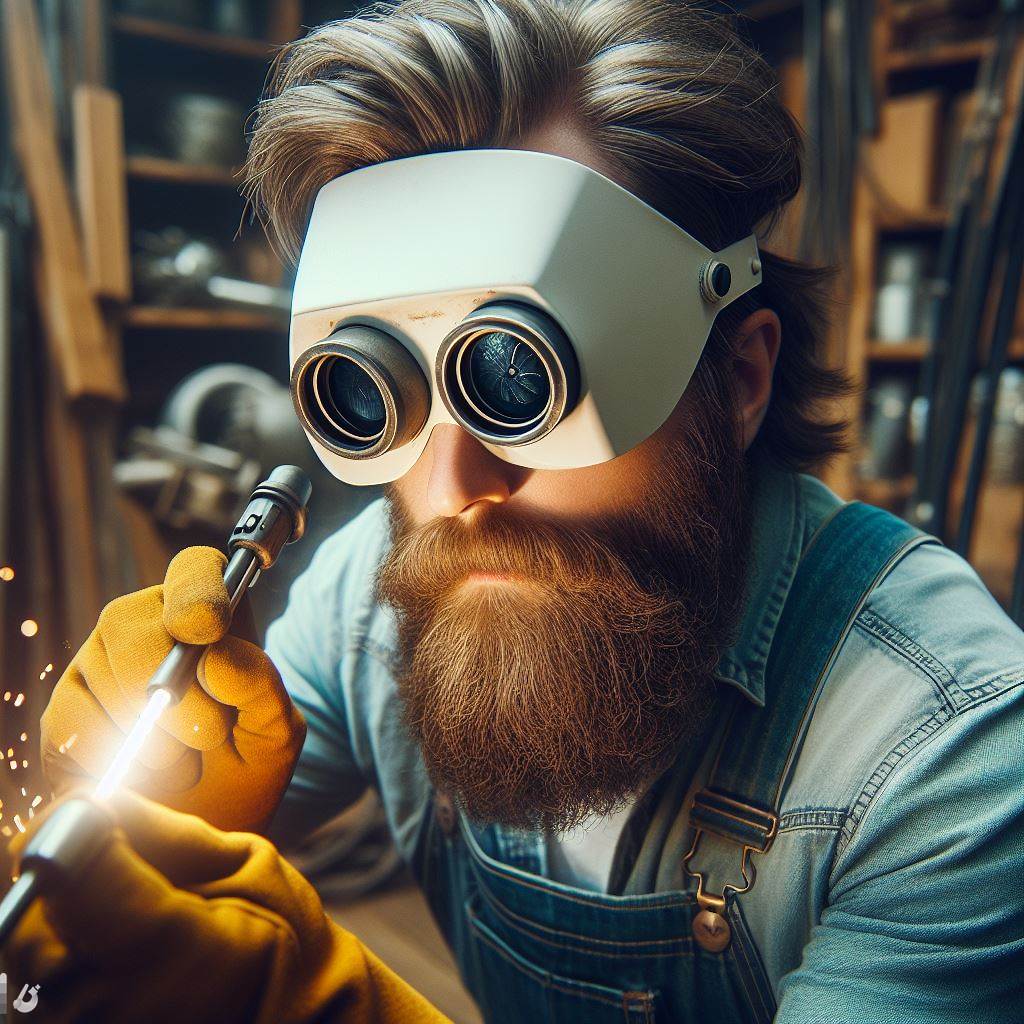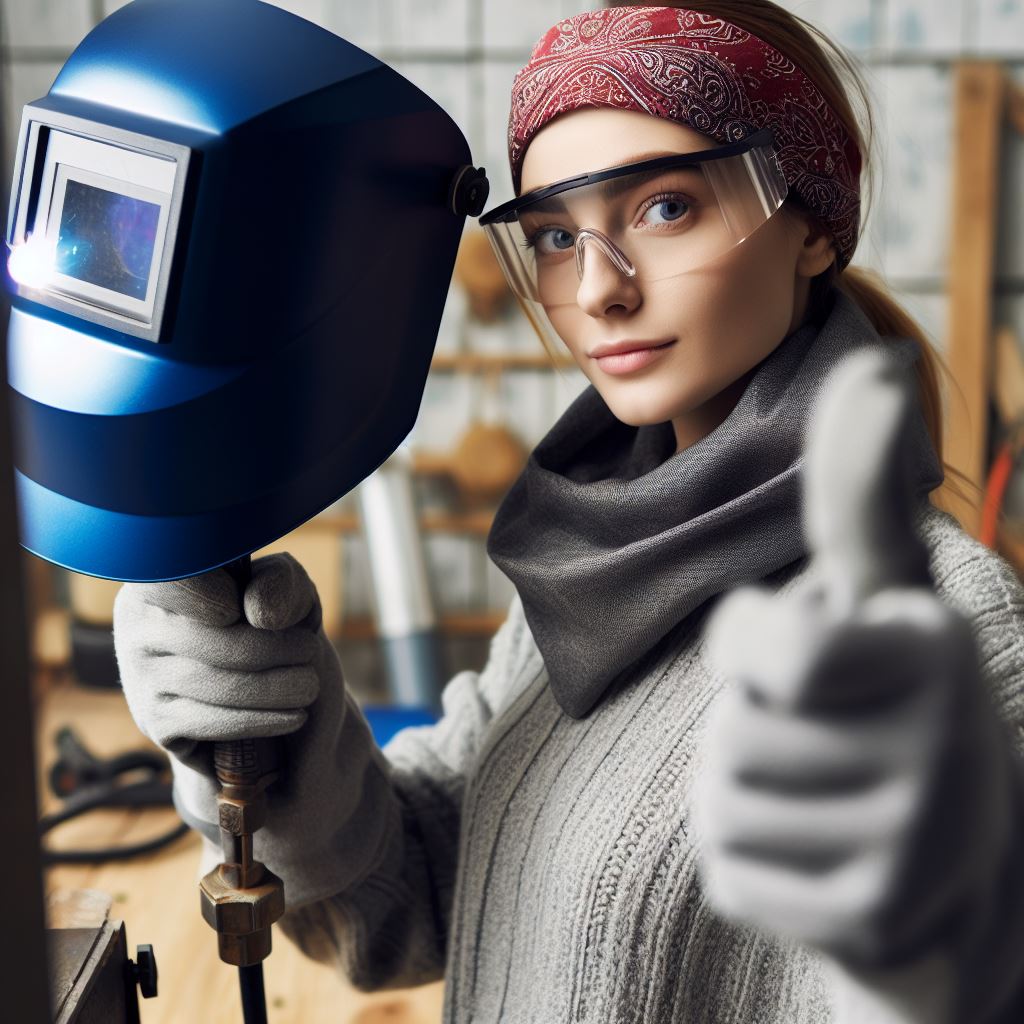Introduction
Welding safety is crucial to protect workers from potential hazards and ensure a safe working environment.
In this blog section, we will discuss essential tips and gear for welding safety to promote best practices in the industry.
“As we delve into ‘Welding Safety 101: Essential Tips and Gear,’ it becomes evident that welding is not merely an industrial skill but a responsibility—one that demands a holistic approach.
In this detailed exploration, we go beyond the basics, unraveling the nuances of welding safety.
From understanding the intricacies of different welding techniques to fostering a culture of mindfulness, we navigate the landscape of potential hazards with a keen eye.
Our journey encompasses not only the essential safety tips but also an in-depth look at the cutting-edge gear designed to protect and enhance the welding experience.
We explore advancements in personal protective equipment, ventilation systems, and emerging technologies that redefine safety standards.
Furthermore, we shed light on the importance of ongoing training and education, emphasizing the dynamic nature of welding safety protocols.
Through this comprehensive guide, we aspire to empower welders to be proactive guardians of their well-being, fostering a community committed to excellence, precision, and above all, safety.
Welcome to ‘Welding Safety 101,’ where knowledge meets craftsmanship, and a secure welding environment is paramount.”
Understanding Welding Hazards
Welding is a crucial process in the construction industry, but it poses several hazards that can cause serious injuries if not properly addressed.
By understanding these hazards, welders can take necessary precautions to ensure their safety.
Types of Welding Hazards
- Heat and radiation: Welding involves high temperatures and intense heat, which can cause burns to the skin and eyes. The intense light emitted during the process can also be damaging to unprotected eyes.
- Fumes and gases: When welding, various fumes and gases are released, including toxic substances like manganese, chromium, and nickel. Prolonged exposure to these fumes can lead to respiratory problems and other chronic health issues.
- Electric shock: Welding machines use high electrical currents, which can result in electric shock if safety measures are neglected. Contact with live electrical parts can lead to severe injuries or even be fatal.
Potential injuries associated with welding
- Burns: The heat generated during welding can cause severe burns to the skin. Welders need to wear protection and avoid direct contact with heated metal or sparks to prevent burns.
- Eye injuries: The intense light and harmful UV radiation produced during welding can cause eye injuries, such as flash burns, cataracts, and retinal damage. Wearing appropriate welding helmets and goggles is crucial for eye protection.
- Inhalation hazards: The fumes and gases released during welding can be harmful when inhaled. Welders should work in well-ventilated areas or wear respiratory protection to prevent respiratory problems and long-term health issues.
To ensure welding safety, it is essential to implement certain preventive measures and use appropriate personal protective equipment (PPE) to mitigate these hazards.
- Welders should always wear fire-resistant clothing, such as welding jackets, gloves, and aprons, to protect themselves from heat and flames.
- A welding helmet with a proper auto-darkening filter is essential to shield the eyes from intense light and harmful UV radiation.
- Respiratory protection, such as respirators or air-purifying masks, should be worn to prevent inhalation of hazardous fumes and gases.
- Insulated gloves and footwear can prevent electric shock by providing an extra layer of protection against electrical currents.
In addition to these measures, welders should receive proper training on safe welding practices and stay updated on the latest safety guidelines.
By understanding the various types of welding hazards, such as heat and radiation, fumes and gases, and electric shock, as well as the potential injuries associated with welding, including burns, eye injuries, and inhalation hazards, welders can prioritize safety and protect themselves from harm.
Read: The Future of Welding Jobs in Canada
Essential Welding Safety Tips
Personal protective equipment (PPE)
- Wear a welding helmet and face shield to protect your eyes and face from sparks and radiation.
- Put on flame-resistant clothing to prevent burns and protect your body from heat and flames.
- Use gloves and safety boots to shield your hands and feet from potential hazards.
Ventilation and respiratory protection
- Ensure proper ventilation in welding areas to reduce inhalation of harmful fumes and gases.
- Wear respiratory masks and filters to filter out hazardous particles and maintain clean breathing air.
Fire prevention and extinguishing equipment
- Keep fire blankets and extinguishers readily available to quickly respond to potential fires.
- Safely store flammable materials in designated areas, away from sparks and ignition sources.
Safe working practices
- Maintain a clutter-free workspace to avoid tripping hazards and improve overall safety.
- Handle and store welding equipment properly to prevent accidents and damage to the equipment.
- Receive adequate training and supervision to ensure you have the necessary knowledge and skills to work safely.
By following these essential welding safety tips, you can significantly reduce the risk of accidents and injuries.
Personal protective equipment (PPE)
Remember, wearing personal protective equipment (PPE) such as a welding helmet, face shield, flame-resistant clothing, gloves, and safety boots is crucial to protect yourself from various hazards.
Additionally, it is important to have proper ventilation in welding areas to minimize exposure to hazardous fumes and gases.
Using respiratory masks and filters can further enhance protection against harmful particles.
Fire prevention and extinguishing equipment
Fire prevention is another critical aspect of welding safety. Always have fire blankets and extinguishers easily accessible in case of emergencies.
Properly storing flammable materials away from potential ignition sources is also essential to prevent fires.
Safe working practices
Safe working practices contribute to a secure welding environment.
Keeping your workspace neat and organized can prevent accidents and ensure a more efficient workflow.
Properly handling and storing welding equipment not only prevents damage but also reduces the risk of accidents.
Unlock Your Career Potential
Visualize a clear path to success with our tailored Career Consulting service. Personalized insights in just 1-3 days.
Get StartedLastly, receiving adequate training and supervision is vital.
Acquiring the necessary knowledge and skills through training programs can enhance your understanding of welding safety procedures.
In fact, welding safety should always be a top priority for welders.
By adhering to the essential tips mentioned above and using the appropriate protective gear, you can create a safe and secure work environment.
Remember, maintaining safety not only protects you but also those working around you.
Stay vigilant, follow safety protocols, and work responsibly to ensure accidents are minimized.
Read: Welding Certifications in Canada: What You Need
Welding Safety Gear and Equipment
When it comes to welding, the importance of using the right safety gear and equipment cannot be overstated.
These essential tools and accessories not only protect you from potential hazards but also ensure that you can work efficiently and effectively.
Here are some of the must-have gear and equipment for welding:
Welding helmet and face shield
A welding helmet is an absolute must for protecting your eyes and face from the intense light and harmful radiation produced during welding.
It should have a suitable lens shade to filter out the harmful ultraviolet (UV) and infrared (IR) rays.
Additionally, wearing a face shield provides an extra layer of protection against sparks, flying debris, and heat.
Welding gloves and protective clothing
Welding gloves are designed to shield your hands from burns, sparks, and other potential injuries.
Ensure that the gloves are made of flame-resistant materials and are of the appropriate length to cover your wrists.
Along with gloves, wear protective clothing such as flame-resistant jackets, pants, and aprons to safeguard your body from molten metal, sparks, and flames.
Fume extractors and ventilation systems
Welding releases hazardous fumes and gases that can be harmful if inhaled.
To maintain a safe working environment, it is crucial to have proper fume extraction and ventilation systems in place.
Fume extractors remove the welding fumes and other airborne contaminants while ventilation systems ensure a continuous supply of fresh air.
Fire-resistant blankets and curtains
In case of any fire-related incidents, fire-resistant blankets and curtains are essential to smother small fires and prevent them from spreading.
These blankets and curtains are made from flame-resistant materials and can be used to extinguish flames engulfing a person or objects.
Welding screens and curtains
Welding screens and curtains help create designated workspaces within a larger welding area.
They provide protection from sparks, bright light, and harmful radiation.
These screens are typically made of flame-resistant materials and should be positioned to protect nearby workers and bystanders.
First-aid kits and emergency equipment
Accidents can happen even with proper safety measures in place. That’s why it is essential to have first-aid kits readily available in case of injuries.
A well-stocked first-aid kit should include bandages, antiseptic solutions, burn treatments, eye wash stations, and other necessary medical supplies.
Additionally, having emergency equipment such as fire extinguishers and eye wash stations nearby is crucial.
Remember, wearing the right safety gear and using the appropriate equipment is not only for compliance but also for your own well-being.
Prioritize your safety and ensure that you have all the necessary welding safety gear and equipment before starting any welding project.
Read: Understanding Different Welding Techniques

Importance of Regular Maintenance and Inspections
In order to ensure welding safety, it is crucial to regularly maintain and inspect the equipment and gear being used.
This section will discuss the importance of equipment inspections, electrical safety checks, and preventive maintenance for welding gear.
Equipment inspections
Regular equipment inspections are essential to identify any potential issues or malfunctions that could compromise safety during welding operations.
Inspecting the equipment before each use helps in detecting worn-out parts, loose connections, or damaged components.
Inspecting the welding equipment includes examining cables, hoses, clamps, and connectors for any signs of wear, fraying, or corrosion.
Additionally, checking for gas leaks and ensuring proper ventilation are also part of equipment inspections.
By conducting equipment inspections, welders can prevent accidents and ensure that the machinery they are working with is in optimal condition.
Electrical safety checks
Electrical safety checks are crucial in welding environments as they help prevent electrical hazards and ensure the smooth functioning of the equipment.
Regular inspections of electrical circuits and connections are necessary to avoid shocks, short circuits, or fires.
During electrical safety checks, it is essential to verify that all electrical components are properly grounded, cables are insulated, and connections are secure.
Inspecting switches, fuses, and circuit breakers is also vital to mitigate any potential risks.
By incorporating routine electrical safety checks, welders can minimize the chances of electrical accidents and create a safe working environment.
Preventive maintenance for welding gear
Preventive maintenance is crucial to ensure the longevity and safe operation of welding gear.
By implementing regular maintenance routines, welders can detect any potential problems and address them before they lead to accidents or equipment failure.
Preventive maintenance includes tasks such as cleaning, lubricating, and adjusting parts of the welding gear.
Inspecting welding cables, electrodes, torches, and regulators for any signs of damage is also necessary to maintain optimal performance.
Additionally, calibrating equipment and replacing worn-out components are important preventive measures that should be carried out periodically.
By investing time and effort into preventive maintenance, welders can enhance the safety and efficiency of their welding operations, ensuring a smooth workflow.
In brief, regular maintenance and inspections are essential aspects of welding safety.
By conducting equipment inspections, performing electrical safety checks, and implementing preventive maintenance for welding gear, welders can minimize the risks associated with welding operations.
These practices not only reduce the chances of accidents but also contribute to the longevity and reliability of the equipment.
Emphasizing the importance of regular maintenance and inspections helps create a culture of safety in welding environments.
Read: Creating a Pollinator Garden in Canada
Additional Welding Safety Considerations
Proper lighting in work areas
- Ensure the work area is well-lit to enhance visibility and prevent accidents.
- Place light sources strategically to eliminate shadows and provide even illumination.
- Regularly inspect lights, replace any burned-out bulbs, and fix faulty wiring immediately.
Pre-welding preparation and clean-up
- Thoroughly clean the workpiece, removing all flammable materials, grease, or paint.
- Inspect welding equipment and tools before use to ensure they are in good working condition.
- Properly position and secure the workpiece to prevent movement during the welding process.
- Wear appropriate personal protective equipment (PPE) during pre-welding preparation and cleanup.
Identifying potential fire hazards
- Regularly inspect the work area and surrounding environment for potential fire hazards.
- Remove any combustible materials or substances from the vicinity of the welding area.
- Properly store flammable liquids, gases, or substances in designated and secure storage areas.
- Always have suitable fire extinguishing equipment nearby and ensure it is regularly inspected and maintained.
Proper handling of compressed gas cylinders
- Familiarize yourself with proper handling and storage practices for compressed gas cylinders.
- Store cylinders upright in a well-ventilated area away from high heat and combustible materials.
- Securely fasten cylinders to prevent tipping or falling during transportation or use.
- Inspect cylinders regularly for damage or leaks and report any issues to maintenance immediately.
- Use appropriate regulators and valves, and follow manufacturer’s instructions for connecting and disconnecting cylinders.
- Never tamper with cylinder valves or attempt to repair damaged cylinders on your own.
By considering these additional safety measures, you can enhance the overall safety of your welding operations.
Remember, welding safety is a continuous process that requires vigilance and adherence to industry best practices.
Regular training and staying up-to-date with safety guidelines are crucial for protecting yourself and others from potential hazards.
Conclusion
Throughout this section, we have discussed essential tips and gear for welding safety.
We covered the importance of personal protective equipment, such as welding helmets, gloves, and fire-resistant clothing.
We also highlighted the significance of proper ventilation and fire prevention measures in the workshop.
Additionally, we emphasized the need for thorough training and understanding of welding techniques to avoid accidents.
Lastly, we stressed the importance of conducting regular inspections and maintenance of welding equipment to ensure safe working conditions.
Welding safety should be a top priority for every welder.
By following the tips and using the appropriate gear discussed, you can significantly reduce the risk of injuries and accidents in your welding practice.
Remember, a momentary lapse in safety precautions could lead to severe consequences.
We encourage you to share any additional welding safety tips or experiences you may have.
Together, we can create a supportive community that values safety and helps each other stay protected.
Your contributions can make a difference in promoting welding safety awareness and preventing accidents. Let’s work together to make welding a safer profession!




